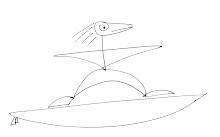The speed at which the economy has been declining has finally leveled off. Still, the popular consensus is that we are still far from the start of a tangible economic recovery...but what will this recovery even look like?
From the Economist:
It looks like most of us will have to adapt to a new economic era, one reminiscent of Japan's lost decade.The worst is over only in the narrowest sense that the pace of global decline has peaked. Thanks to massive—and unsustainable—fiscal and monetary transfusions, output will eventually stabilise. But in many ways, darker days lie ahead. Despite the scale of the slump, no conventional recovery is in sight. Growth, when it comes, will be too feeble to stop unemployment rising and idle capacity swelling. And for years most of the world’s economies will depend on their governments.
Consider what that means. Much of the rich world will see jobless rates that reach double-digits, and then stay there. Deflation—a devastating disease in debt-laden economies—could set in as record economic slack pushes down prices and wages, particularly since headline inflation has already plunged thanks to sinking fuel costs. Public debt will soar because of weak growth, prolonged stimulus spending and the growing costs of cleaning up the financial mess. The OECD’s member countries began the crisis with debt stocks, on average, at 75% of GDP; by 2010 they will reach 100%. One analysis suggests persistent weakness could push the biggest economies’ debt ratios to 140% by 2014. Continuing joblessness, years of weak investment and higher public-debt burdens, in turn, will dent economies’ underlying potential. Although there is no sign that the world economy will return to its trend rate of growth any time soon, it is already clear that this speed limit will be lower than before the crisis hit.


No comments:
Post a Comment